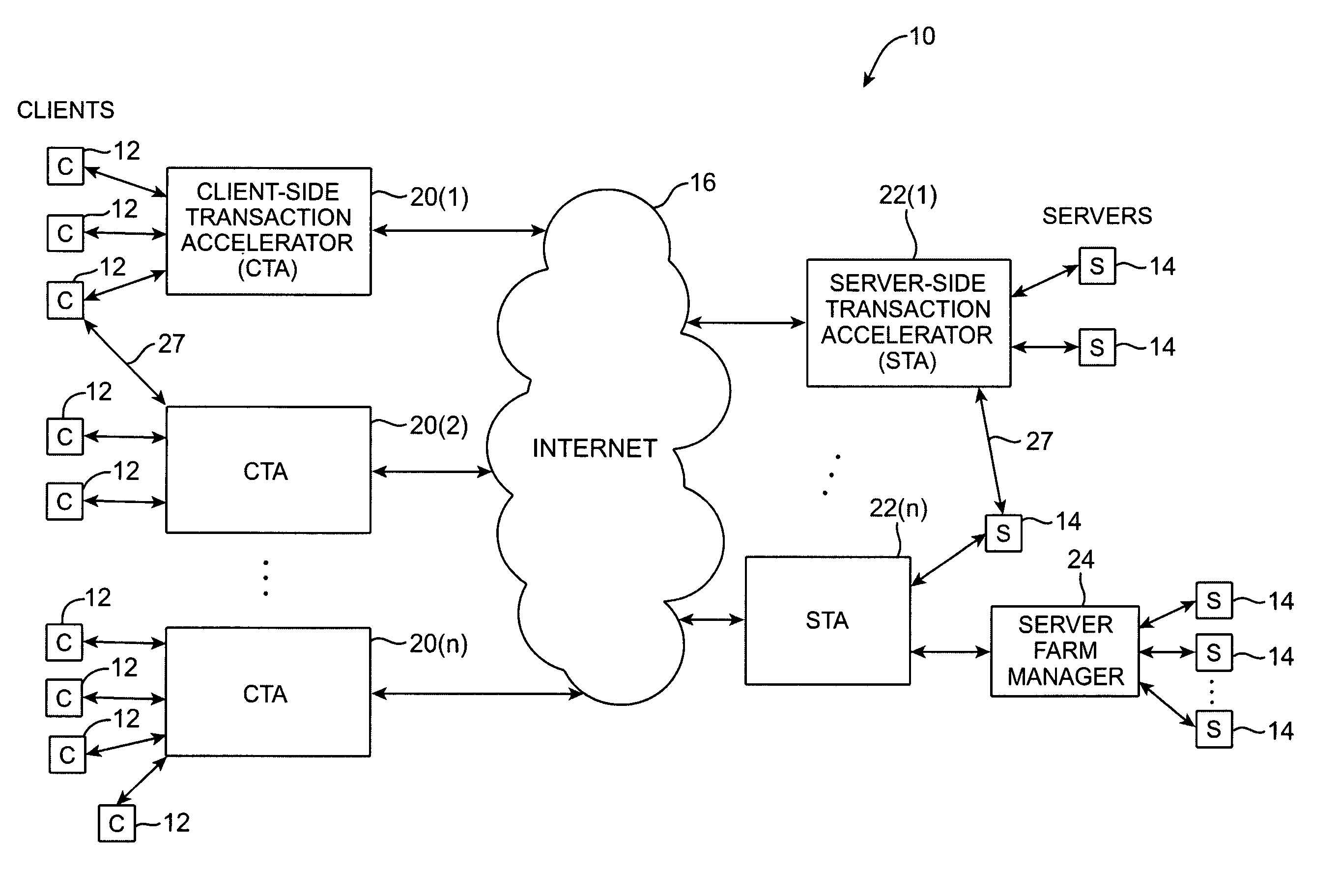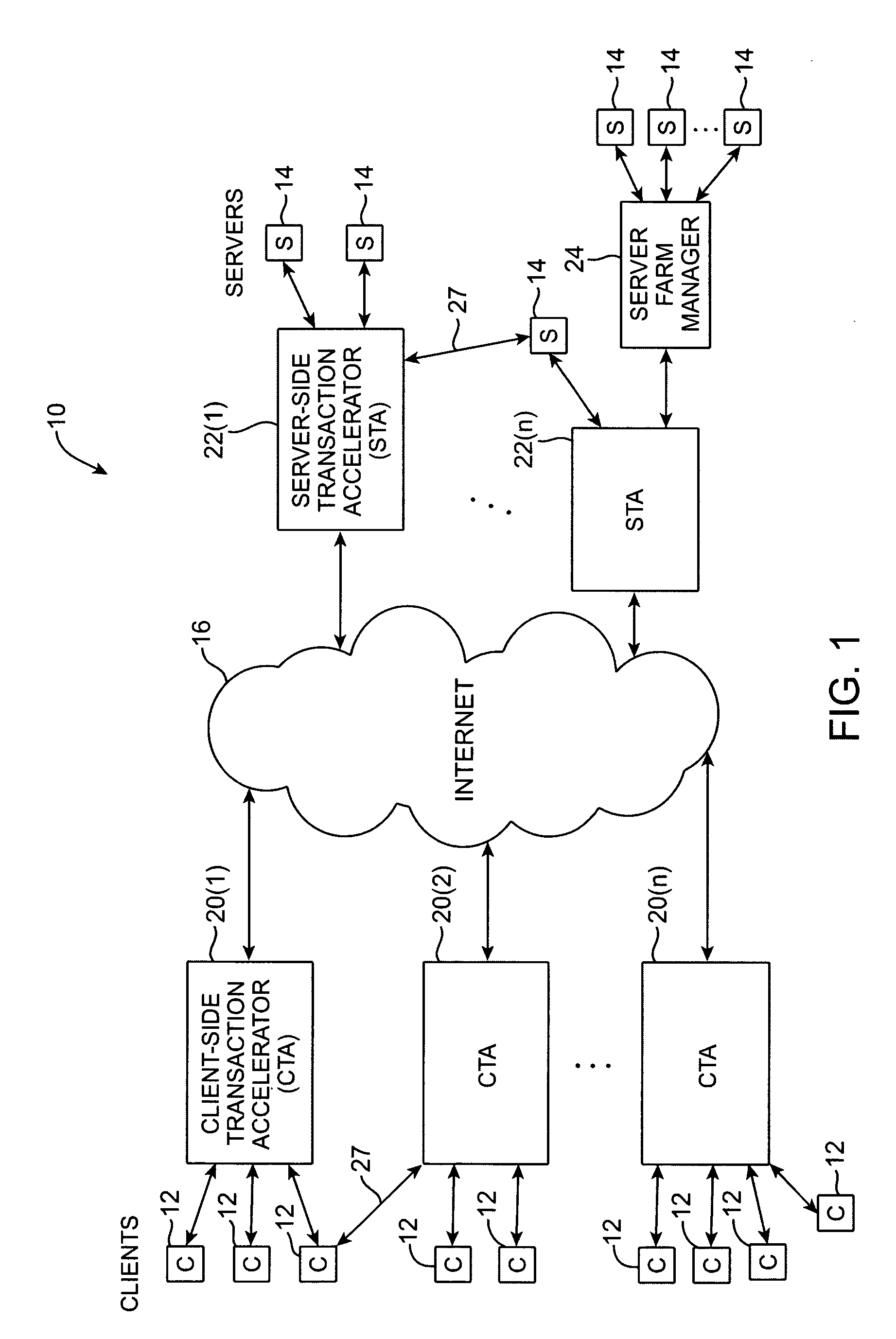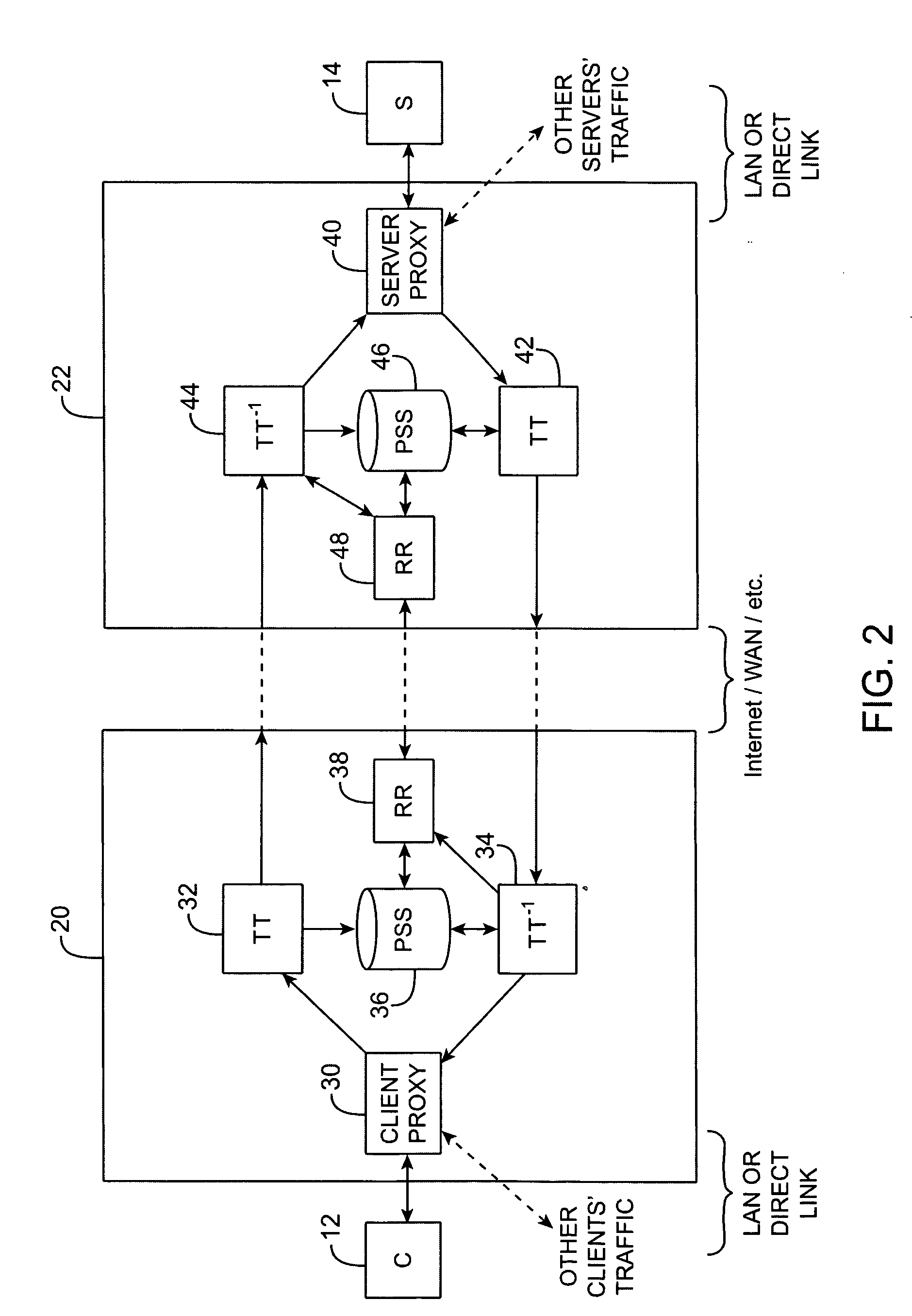Similar design problems exist for other network services, such as e-mail services, computational services,
multimedia, video conferencing,
database querying, office
collaboration, etc.
For example, when the effective distance is increased due to limited bandwidth, that limitation can be ameliorated using compression or by caching.
In some cases, compression might add to the latency, if time is needed to compress data after the request is made and time is needed to decompress the data after it is received.
This may be able to be improved if the data can be compressed ahead of time, before the request is made, but that may not be feasible if the data is not necessarily available ahead of time for compression, or if the volume of data from which the request will be served is too large relative to the amount of data likely to be used.
Caching also provides some help in reducing effective distance, but in some situations it does not help much.
Caching has its difficulties, one of which is that the data might change at the source and the cache would then be supplying “stale” data to the requester.
Another problem with caching is that the original source of the data might want to track usage of data and would not be aware of uses that were served from the cache as opposed to from the original source.
In some cases, an
Internet service provider might operate the cache remote from the browsers and provide cached content for a large number of browsers, so a
Web server operator might even miss unique users entirely.
Additionally, the mechanism underlying Web caching provides only a loose model for consistency between the origin data and the cached data.
This means that cached Web data can occasionally become inconsistent with the origin server and such inconsistencies are simply tolerated by
Web site operators, service providers, and users as a reasonable performance trade-off.
Unfortunately, this model of loose consistency is entirely inappropriate for general client-server communication like networked file systems.
Such systems have limitations in that they are tied to file systems and generally require modification of the clients and servers between which responsiveness is to be improved.
Furthermore, the hashing scheme operates over blocks of relatively large (average) size, which works poorly when files are subject to fine-grained changes over time.
It is not able to optimize or accelerate other types of client-server transactions, e.g., e-mail, Web, streaming media, and so forth.
Because it operates solely on individual packets, the performance gains that accrue are limited by the ratio of the
packet payload size to the packet header (since the packet header is generally not compressible using the described technique).
This configuration can be difficult to achieve, and may be impractical in certain environments.
Also, by caching network packets using a relatively small memory-based cache with a first-in first-out replacement policy (without the aid of, for instance, a large disk-based backing store), the
efficacy of the approach is limited to detecting and exploiting communication redundancies that are fairly localized in time.
Finally, because this approach has no ties into the applications or servers that generate the (redundant) network traffic, there is no ability to anticipate where data might be used and pre-stage that data in the far-end cache providing potential further acceleration and optimization of network traffic.
Individuals in the organization will attempt local solutions by turning to ad hoc e-mail
collaboration (which might make one file more readily accessible by one user, but adds version control problems and adds to the overall network load).
 Login to View More
Login to View More  Login to View More
Login to View More 


